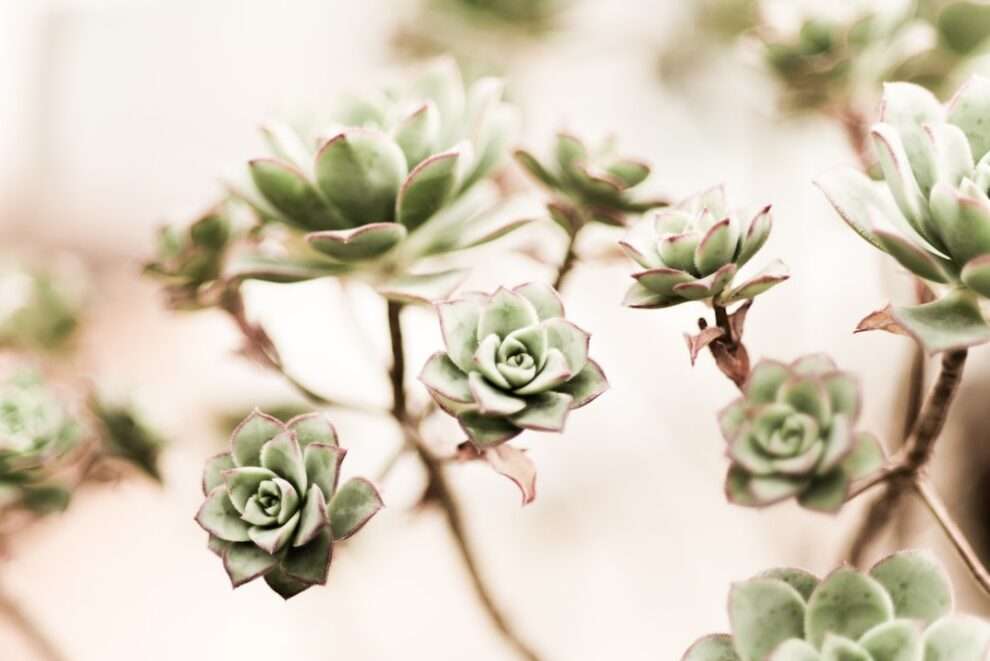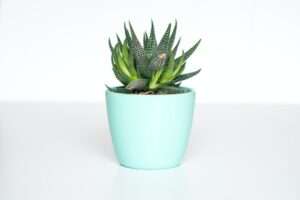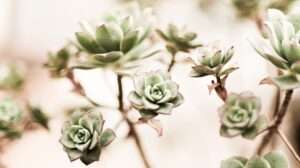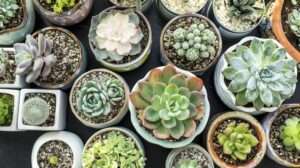Succulent combinations are arrangements of different types of succulents that are planted together in a container or garden bed. These combinations can be created using a variety of succulent species, colors, textures, and shapes to create visually appealing displays. Succulent combinations have gained popularity in recent years due to their low maintenance requirements and ability to thrive in various environments.
One of the benefits of creating succulent combinations is the ability to showcase the unique characteristics of each individual succulent. By combining different varieties, you can create a display that is visually interesting and dynamic. Succulents come in a wide range of colors, shapes, and textures, allowing for endless possibilities when it comes to creating combinations.
Choosing the Right Succulents for Your Display
When selecting succulents for your combination, there are several factors to consider. First, you’ll want to choose succulents that have similar care requirements. This will ensure that all the plants in your combination will thrive together. Some succulents prefer full sun, while others prefer partial shade, so it’s important to choose plants that have similar light requirements.
Another factor to consider is the size and growth habit of the succulents. Some succulents grow tall and upright, while others spread out and trail. By choosing a variety of sizes and growth habits, you can create a more visually interesting display.
Some succulent varieties that work well together include Echeveria and Sedum. Echeveria are known for their rosette-shaped leaves and come in a variety of colors. Sedum, on the other hand, have small, fleshy leaves and come in a range of shapes and sizes. When combined, these two varieties create a beautiful contrast in color and texture.
Tips for Successful Succulent Pairings
When creating succulent combinations, it’s important to consider how different colors, textures, and shapes will work together. One way to create balance in your display is to choose a variety of succulents with different leaf shapes and sizes. For example, you could pair succulents with rosette-shaped leaves with those that have spiky or trailing leaves.
Creating contrast is another important aspect of successful succulent pairings. By combining succulents with different colors and textures, you can create a visually interesting display. For example, you could pair succulents with smooth, rounded leaves with those that have rough, textured leaves.
In addition to color and texture, it’s also important to consider the overall shape and form of the succulents. Some succulents have a more upright growth habit, while others spread out and trail. By combining succulents with different growth habits, you can create a display that has depth and dimension.
Creating a Cohesive Color Scheme
Color is an important aspect of any succulent combination. By choosing a cohesive color scheme, you can create a more visually pleasing display. One way to create a cohesive color scheme is to choose succulents that are all within the same color family. For example, you could create a combination using only shades of green or shades of purple.
Another option is to choose succulents that have complementary colors. Complementary colors are those that are opposite each other on the color wheel, such as red and green or purple and yellow. By pairing succulents with complementary colors, you can create a display that is visually striking.
It’s also important to consider the colors of the container or garden bed when choosing succulents for your combination. The container or bed should complement the colors of the succulents and help to enhance the overall display.
Incorporating Different Textures and Shapes
In addition to color, texture and shape are important aspects to consider when creating succulent combinations. Succulents come in a wide range of textures, from smooth and glossy to rough and textured. By combining succulents with different textures, you can create a display that is visually interesting and dynamic.
One way to incorporate different textures is to choose succulents with different leaf shapes. Some succulents have rosette-shaped leaves, while others have spiky or trailing leaves. By combining succulents with different leaf shapes, you can create a display that has depth and dimension.
It’s also important to consider the overall shape and form of the succulents when creating combinations. Some succulents have a more upright growth habit, while others spread out and trail. By combining succulents with different growth habits, you can create a display that has movement and visual interest.
Mixing and Matching Container Styles

The container or garden bed that you choose for your succulent combination can greatly impact the overall look and feel of the display. There are many different container styles to choose from, including terracotta pots, ceramic pots, wooden boxes, and hanging baskets.
When choosing a container, it’s important to consider the size and shape of the succulents that you will be planting. If you are using larger succulents, you will need a larger container to accommodate their size. Similarly, if you are using trailing succulents, you may want to choose a hanging basket or a container with a wider opening.
The material of the container is also important to consider. Terracotta pots are a popular choice for succulent combinations because they are porous and allow for good drainage. Ceramic pots are another option and come in a wide range of colors and styles. Wooden boxes can add a rustic touch to your display, while hanging baskets are great for trailing succulents.
Designing for Different Seasons and Occasions
Succulent combinations can be designed to suit different seasons and occasions. For example, you could create a combination using succulents with red and green foliage for the holiday season. Or, you could create a combination using succulents with pastel colors for spring.
When designing for different seasons and occasions, it’s important to consider the colors and textures of the succulents. For example, in the fall, you may want to choose succulents with warm, earthy tones such as reds, oranges, and browns. In the spring, you may want to choose succulents with soft, pastel colors such as pinks, purples, and blues.
You can also incorporate seasonal elements into your succulent combinations. For example, you could add small pumpkins or gourds to your display for the fall or small ornaments for the holiday season. These elements can help to enhance the overall theme of your display.
Low-Maintenance Care for Your Succulent Combinations
One of the benefits of succulent combinations is that they are low-maintenance and require minimal care. Succulents are known for their ability to store water in their leaves, stems, and roots, which allows them to survive in dry conditions.
When it comes to watering your succulent combinations, it’s important to strike a balance. Overwatering can lead to root rot and other issues, while underwatering can cause the plants to become dehydrated. As a general rule, it’s best to water your succulents when the soil is completely dry. This will vary depending on the climate and time of year, so it’s important to monitor the moisture levels of the soil.
In addition to watering, succulents also require good drainage. This can be achieved by using a well-draining soil mix and ensuring that your container or garden bed has drainage holes. If your container does not have drainage holes, you can add a layer of gravel or small rocks to the bottom to help with drainage.
Troubleshooting Common Issues with Succulent Displays
While succulents are generally easy to care for, they can still experience common issues. One of the most common issues with succulent combinations is overwatering. Overwatering can lead to root rot and other problems, so it’s important to water your succulents sparingly.
Another common issue is pests. Succulents can attract pests such as mealybugs, aphids, and spider mites. If you notice any signs of pests, such as small white bugs or webbing, it’s important to take action immediately. You can use insecticidal soap or a mixture of water and dish soap to treat the affected plants.
Other common issues include sunburn, which can occur if your succulents are exposed to too much direct sunlight, and etiolation, which occurs when succulents do not receive enough light and become stretched out and leggy. To prevent sunburn, it’s important to gradually acclimate your succulents to direct sunlight. To prevent etiolation, make sure that your succulents are receiving enough light and adjust their placement if necessary.
Inspiration and Ideas for Your Next Succulent Combination
If you’re looking for inspiration for your next succulent combination, there are many resources available. You can browse through gardening magazines and books, visit local nurseries and garden centers, or search online for ideas and inspiration.
One way to get inspired is to look at photos of other people’s succulent combinations. There are many websites and social media platforms dedicated to showcasing beautiful and creative succulent displays. You can also join online gardening communities or attend local gardening events to connect with other succulent enthusiasts and share ideas.
Another way to get inspired is to visit botanical gardens or public gardens that have displays of succulent combinations. These gardens often have a wide variety of succulents on display and can provide ideas for different color schemes, textures, and container styles.
In conclusion, succulent combinations are a great way to showcase the unique characteristics of different succulent varieties. By choosing succulents with similar care requirements and considering factors such as color, texture, and shape, you can create visually appealing displays. With proper care and maintenance, your succulent combinations can thrive and bring beauty to your space. So go ahead and get creative with your succulent combinations and enjoy the beauty and low-maintenance benefits they provide.
If you’re looking to add some variety to your succulent collection, you might want to consider incorporating snake plants. These surprising succulents are not only visually appealing but also easy to care for. To learn more about growing and caring for snake plants, check out this comprehensive guide: Snake Plants: The Surprising Succulent You Need in Your Collection. It’s a great resource for anyone looking to expand their succulent combinations and create stunning displays.
FAQs
What are succulent combinations?
Succulent combinations refer to the art of combining different types of succulent plants to create a visually appealing display.
What are some popular succulent combinations?
Some popular succulent combinations include combining different shades of green, combining different textures, and combining different sizes and shapes.
What are some tips for creating stunning succulent displays?
Some tips for creating stunning succulent displays include choosing a variety of succulent plants, selecting a container that complements the plants, and arranging the plants in a visually appealing way.
What are some common mistakes to avoid when creating succulent combinations?
Some common mistakes to avoid when creating succulent combinations include overwatering the plants, using a container that is too small, and not providing enough sunlight for the plants.
What are some benefits of creating succulent combinations?
Some benefits of creating succulent combinations include adding beauty to indoor and outdoor spaces, improving air quality, and reducing stress levels.

















Add Comment